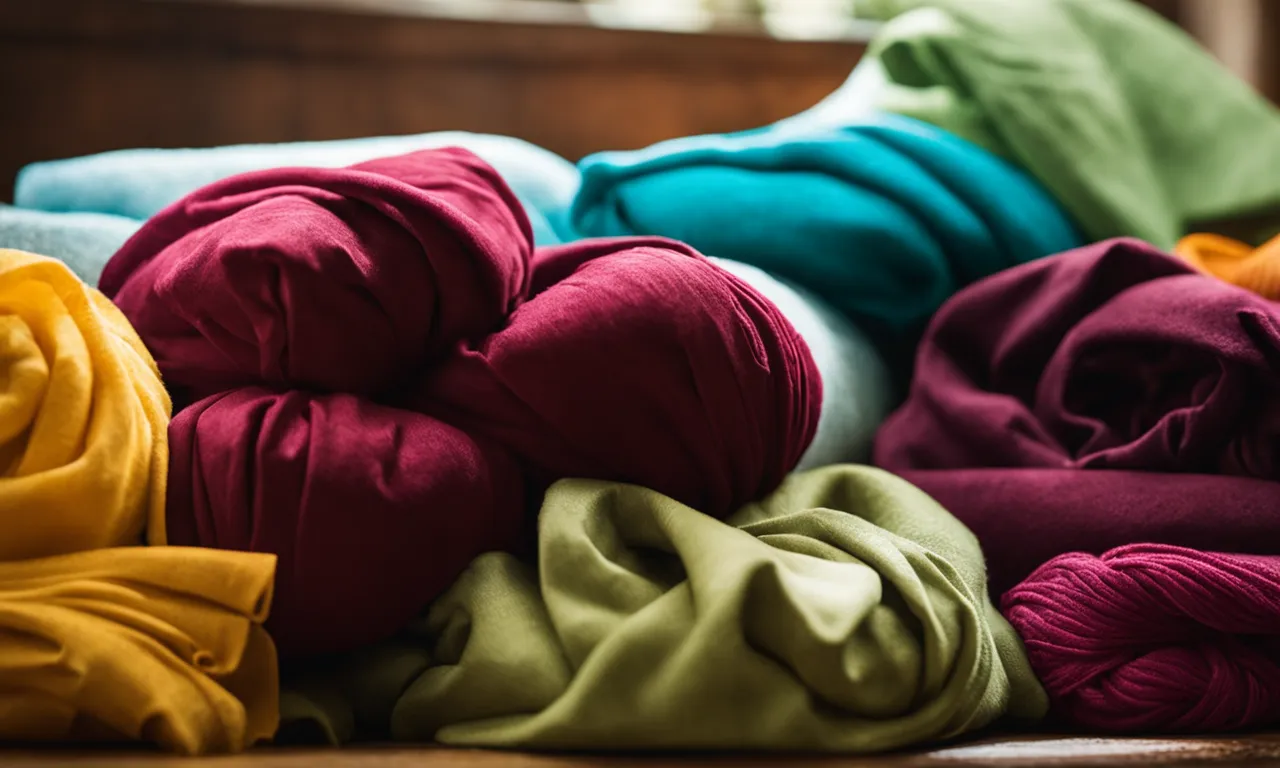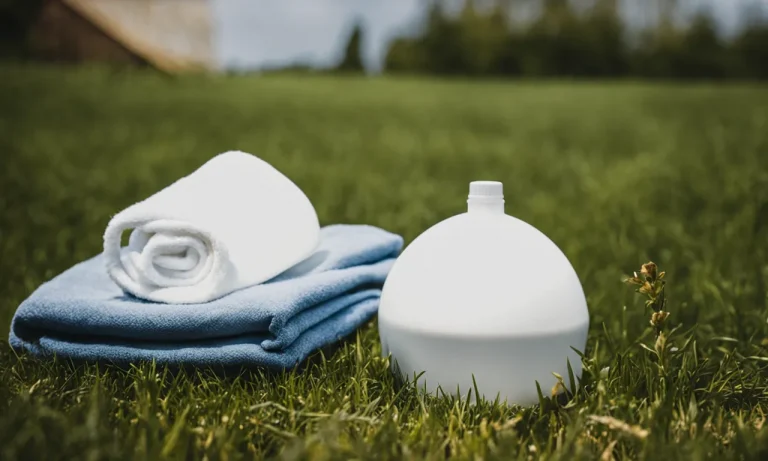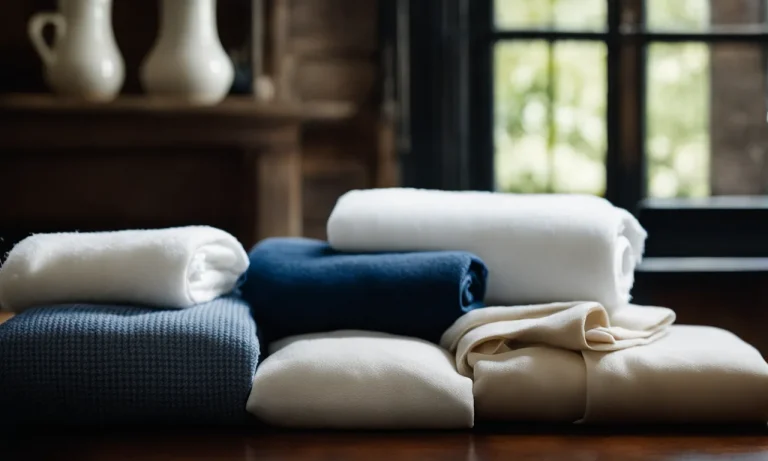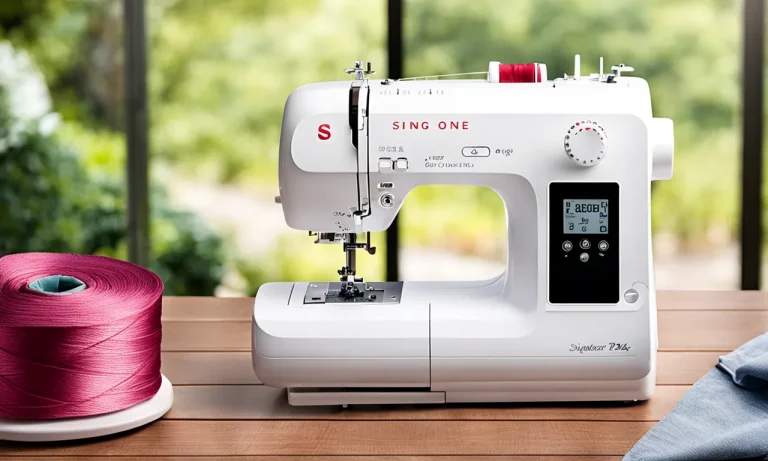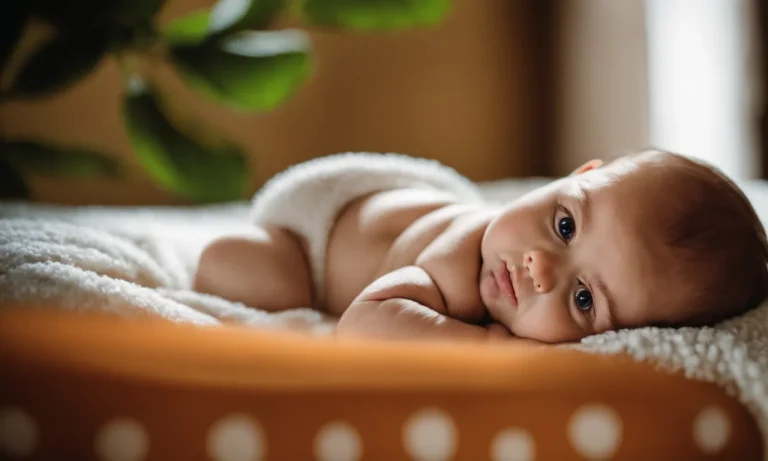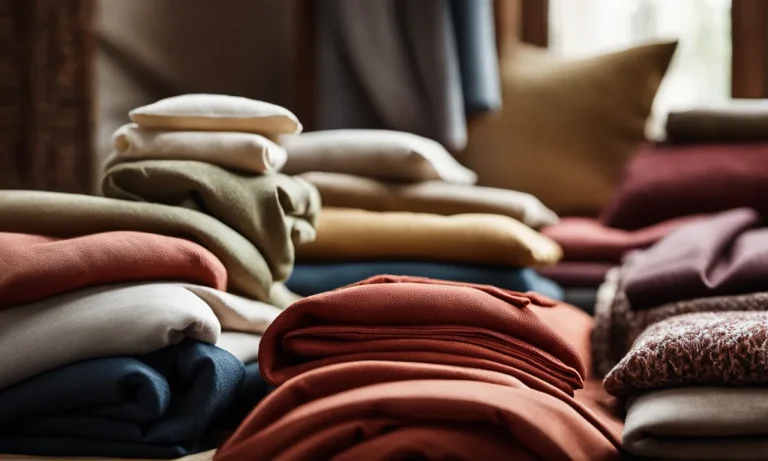How To Use Fabric Dye: A Step-By-Step Guide
Dyeing fabric at home can seem daunting, but with the right supplies and techniques, even beginners can achieve beautiful, vibrant results. Whether you want to freshen up old linens, give a new color to clothing, or get creative with fabric art, learning how to properly dye fabric opens up many possibilities.
If you’re short on time, here’s a quick answer to your question: Dyeing fabric successfully requires the right kind of dye for the fabric type, protective gear like gloves, and preparation like washing and wetting the fabric.
Follow the dye package directions closely for amount, water temperature, and processing time. Rinse thoroughly until water runs clear.
Choose Your Dye Type Based on Fabric
When it comes to dyeing fabric, one of the most important considerations is choosing the right type of dye for your specific fabric. Different dyes are formulated to work best with certain types of materials, ensuring vibrant and long-lasting color results.
Here are three common types of dyes and the fabrics they are best suited for:
Fiber-reactive dyes for natural fibers
Fiber-reactive dyes are ideal for dyeing natural fibers such as cotton, linen, and rayon. These dyes chemically bond with the fabric, resulting in color that is resistant to fading and washing. They are available in a wide range of vibrant shades and can create beautiful, saturated colors.
Some popular brands of fiber-reactive dyes include Dharma Trading Co. and Procion MX. These dyes require the use of a soda ash fixative to ensure proper bonding with the fabric.
Acid dyes for silks and wool
If you’re looking to dye silk or wool, acid dyes are the way to go. These dyes are specifically formulated to work with protein-based fibers and require an acidic environment to bond with the fabric. Acid dyes come in both powder and liquid form and can produce intense and vibrant colors.
Some well-known brands of acid dyes include Jacquard Acid Dyes and Dharma Trading Co. Acid dyes are typically used with vinegar or citric acid as the acid component.
Disperse dyes for synthetics
When it comes to dyeing synthetic fibers like polyester or nylon, disperse dyes are the most suitable choice. These dyes are designed to penetrate the tightly woven structure of synthetic fabrics, resulting in vibrant and long-lasting color.
Disperse dyes are available in both powder and liquid form and can be used with a variety of dyeing techniques. Some popular brands of disperse dyes include iDye Poly and Rit DyeMore. It’s important to note that disperse dyes require high heat for the dyeing process, usually achieved through boiling water or a hot dye bath.
Remember, always read the instructions and follow the manufacturer’s recommendations when using fabric dyes. Additionally, it’s a good idea to conduct a small dye test on a fabric scrap or inconspicuous area before dyeing your entire fabric to ensure the desired color result.
Assemble Your Supplies
Dye, gloves, aprons/old clothes
The first step in using fabric dye is to gather all the necessary supplies. You will need fabric dye in the color of your choice, gloves to protect your hands from staining, and aprons or old clothes to protect your clothing from any spills or splatters.
It’s always a good idea to wear something you don’t mind getting a little messy, just in case!
Large bucket, stirring tool
Next, you’ll need a large bucket to hold the dye mixture. This bucket should be large enough to accommodate the fabric you’ll be dyeing. Additionally, you’ll need a stirring tool, such as a wooden spoon or a paint stirrer, to thoroughly mix the dye and ensure an even distribution of color.
Fabric
Of course, you can’t dye fabric without having fabric to dye! Choose the type of fabric you want to dye, whether it’s cotton, silk, or another material, and make sure it is clean and free of any stains or dirt before you begin the dyeing process.
Pre-washing the fabric can also help to remove any sizing or chemicals that may interfere with the dye absorption.
Pro Tip: If you’re unsure about which type of fabric dye to use or how to properly prepare your fabric, check out Rit Dye’s website. They offer a wealth of information and resources on fabric dyeing techniques and can help guide you through the process.
Prepare the Fabric
Before you start dyeing your fabric, it’s important to properly prepare it to ensure the best results. Here are two key steps to follow:
Wash and dry fabric beforehand
Before applying any fabric dye, it’s crucial to wash and dry the fabric. This helps to remove any dirt, oils, or chemicals that may be present on the fabric, which could affect the dye’s ability to adhere properly. Use a mild detergent and follow the care instructions on the fabric label.
Once washed, make sure to dry the fabric completely before moving on to the next step.
Wet fabric thoroughly before dyeing
After the fabric is clean and dry, it’s time to wet it thoroughly before dyeing. Wetting the fabric helps the dye to spread evenly and achieve vibrant colors. You can either soak the fabric in water or use a spray bottle to wet it.
Make sure that the fabric is evenly saturated and doesn’t have any dry spots. This step is especially important when using certain types of fabric dyes, such as fiber reactive dyes, which require moisture to activate the dyeing process.
Mix the Dye
Follow package instructions carefully
When using fabric dye, it is essential to carefully read and follow the instructions provided on the package. Different dyes may have specific mixing ratios or additional steps that need to be followed. This will ensure that you achieve the desired color and prevent any mishaps or disappointment.
Use very hot but not boiling water
One crucial step in mixing fabric dye is to use hot water. The temperature of the water can affect how well the dye dissolves and adheres to the fabric. It is recommended to use very hot water, but not boiling. Boiling water can cause damage to certain types of fabric and may alter the dye’s color.
So, it’s important to find the right balance and use water that is hot enough to dissolve the dye effectively.
Stir constantly until fully dissolved
After adding the dye to the hot water, it is important to stir the mixture constantly until the dye is fully dissolved. This will help to ensure an even distribution of the dye particles in the water. If the dye is not fully dissolved, it may result in uneven or patchy dyeing on the fabric.
So, be patient and stir until you no longer see any dye particles in the water.
Dye the Fabric
When it comes to dyeing fabric, there are several important steps to follow to achieve the best results. The first step is to add the wet fabric to the dye bath. Make sure the fabric is thoroughly wet before adding it to the dye bath.
This will help the dye to penetrate the fabric evenly and produce a vibrant color.
Add wet fabric to dye bath
Once you have prepared the dye bath according to the instructions on the package, carefully place the wet fabric into the dye bath. It’s important to fully immerse the fabric in the dye bath to ensure that the color is evenly distributed.
You may need to gently squeeze the fabric to remove any air bubbles and ensure that it is fully saturated with the dye.
Stir gently to evenly distribute dye
After adding the fabric to the dye bath, use a spoon or a stick to gently stir the fabric. This will help to evenly distribute the dye and prevent any uneven coloration. It’s important to stir gently to avoid creating wrinkles or damaging the fabric.
Take your time and make sure that every part of the fabric is exposed to the dye.
Monitor for package recommended time
Each fabric dye package comes with a recommended time for how long the fabric should be left in the dye bath. It’s important to monitor the fabric and follow the recommended time to achieve the desired color intensity.
Keep an eye on the fabric and set a timer to ensure that you don’t leave it in the dye bath for too long or remove it too soon.
Remember, different fabrics may require different dyeing times, so it’s essential to check the instructions specific to the fabric you are dyeing. Once the recommended time has passed, carefully remove the fabric from the dye bath and rinse it thoroughly with cold water to remove any excess dye.
Allow the fabric to dry completely before using or washing it.
For more detailed instructions and tips on fabric dyeing, you can visit The Spruce Crafts or Dharma Trading Co. These websites offer a wealth of information on fabric dyeing techniques and can help you achieve fantastic results.
Rinse and Dry
After applying fabric dye to your garment, it is important to properly rinse and dry it to ensure the color sets and stays vibrant. Here is a step-by-step guide on how to rinse and dry your dyed fabric:
Rinse in cool water until runs clear
Once you have finished dyeing your fabric, start the rinsing process by placing it under cool running water. Make sure to rinse the fabric until the water runs clear. This step helps remove any excess dye and prevents it from bleeding onto other fabrics during future washes.
Wash in mild detergent if needed
If you notice that there is still some color bleeding after rinsing, you can wash the fabric with a mild detergent. Fill a basin or sink with cool water and add a small amount of gentle detergent. Gently agitate the fabric in the soapy water and then rinse it again until the water runs clear.
Air or machine dry
Once the rinsing process is complete, you have two options for drying your fabric: air drying or machine drying. Air drying is a gentle method that helps preserve the color and texture of the fabric. Simply hang the fabric in a well-ventilated area, away from direct sunlight.
If you choose to machine dry, select a low heat setting to prevent any potential damage to the fabric. Remember to always check the care instructions on the fabric label before proceeding with drying.
By following these steps, you can ensure that your dyed fabric maintains its vibrant color for a long time. Remember to always handle dyed fabrics with care, as excessive washing or exposure to harsh chemicals can cause the color to fade over time. Enjoy your beautifully dyed creations!
Conclusion
With the proper techniques and safety precautions, dyeing fabric at home can yield gorgeous colors on all kinds of fabrics. Remember to thoroughly rinse the dyed item until the water runs clear. Your dyed creation will look professionally done.
With some practice, you can soon master the art of fabric dyeing.

